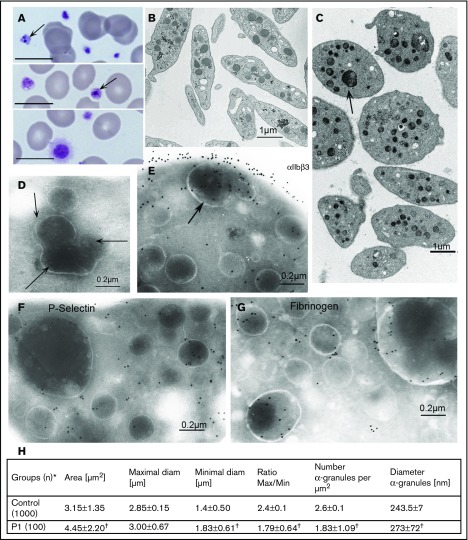Figure 2.
Morphologic evaluations of platelets from the proband (P1). (A) May-Grünwald-Giemsa–stained blood smears showing platelet anisotropy for P1 and abnormal granules (arrows). Scale bars represent 10 μm. (B-D) Typical electron microscopy (EM) images of platelets from (B) a control donor and (C) P1. The contrast between the discoid control platelets and the round enlarged platelets from P1 is striking; some contain many normal or 1 or more giant granules. (D-G) Selected immunogold labeling of cryosections of platelets from P1. All methods were as described in Nurden et al6 and involve incubation of sections with selected mAbs and their detection with a secondary antibody to murine IgG adsorbed on 10-nm gold particles. (D) A section without primary antibody; arrows indicate what appear to be grouped granules undergoing fusion or division. (E) αIIbβ3 (detected by using mAb AP-2) is shown on the platelet surface and within internal membrane systems, including those of an enlarged α-granule. (F) Similar labeling for P-selectin (mAb VH10). (G) Fibrinogen (Fg; with a polyclonal antibody) with gold beads often close to the α-granule membrane. For all immunogold images, scale bars represent 0.2 µm. (H) A quantitative morphometric evaluation of platelet size parameters (standard EM) and the number and diameter of α-granules of P1. *Number of platelet sections analyzed. Data are presented as mean ± standard deviation. Statistical significance was determined by Student t test for continuous variables. †A P value of < .01 was considered statistically significant.

